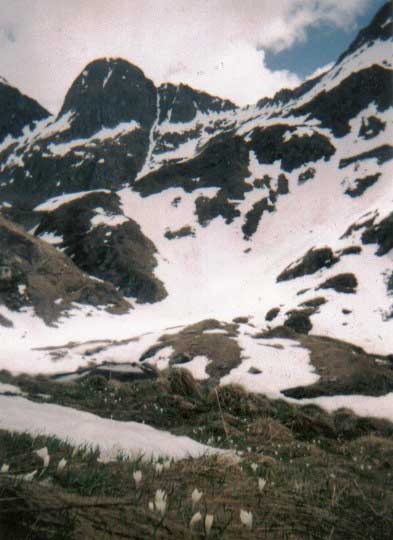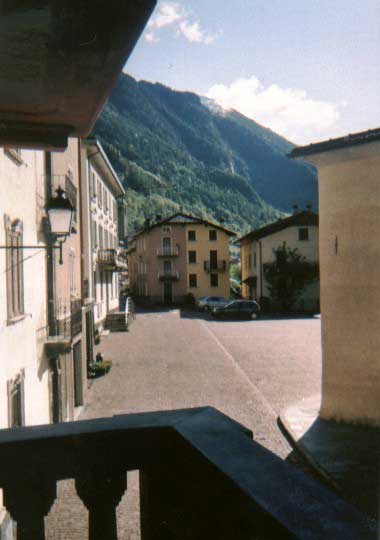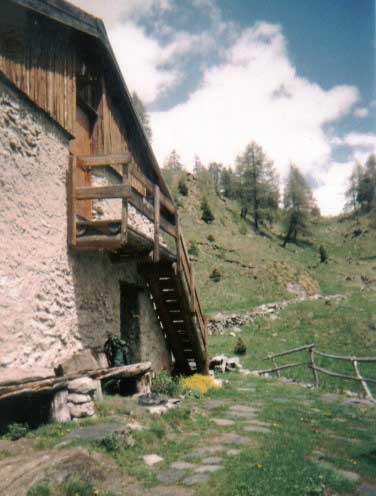From Bergamo to the Alps
The high walls of Bergamo gaze southward across the plain, but also mark – less obviously – the beginnings of the mountains. You can see from the top of the ancient tower in the town’s central piazza that the whole northern arc is rising ground, mostly green and woody. Near at hand these hills are nicely patched with orchards, vineyards and the gardens of big villas, but less than twenty miles (30 kilometres) north they become the real thing, the Bergamasque Alps, alternatively known as the Orobian Alps. There are no vineyards there. The bedrock is granite, the forests are pine and the summits rise above them in jagged splendour. It looks like Switzerland. But Switzerland is a long way off. The dialect is still the Italian of Bergamo, and the territory looks naturally to Bergamo as its capital. Its equally natural and practical for a visitor to explore these mountains from a base in the city or direct from Bergamo airport.
> More about Bergamo
> Milan Bergamo Airport (‘Orio al Serio’)
Find and book hotels. With location maps and guest reviews.
About the Bergamasque Alps
The Bergamasque Alps rise to between eight and ten thousand feet (2,500-3,000m.) but are penetrated by two long valleys. Both of the rivers responsible pass through the outskirts of Bergamo and are accompanied by modern roads as well as decent bus services (blue SAB buses rather than the yellow ATB city buses). Each valley is rather industrialised in their lower stages, as usual in Italy, but are so narrow further up that in places there is barely room for road and river to squeeze between towering walls of rock and forest. Where there is space along the main valley or the many branching side-valleys, old villages and towns stand along the riverbanks or among meadows, and a few small ski centres have been developed higher up.
The area enjoys a good reputation among rally cyclists for its passes and gradients, and among serious climbers for its firm igneous rock. There are mapped footpaths as well as Renaissance churches. Its easy accessibility is favoured by an increasing number of visitors, despite rather undeveloped (at the time of writing) sources of information locally. We provide here a short account of each of the two valley systems in turn.
Serio Valley (Valle Seriana)

This is the easterly valley. The river passes very close to Orio al Serio Airport, from which it takes half-an-hours drive to outstrip fairly continuous development. The main centre of the valley (and hub of its public transport), Clusone, lies just beyond. From here theres a short and easy cut through the hills south again to Lovere, on Lake Iseo. Travelling around the lake, perhaps with a halt at the pleasant town of Iseo, back towards Bergamo makes for an easy day out.
Continuing beyond Clusone brings you instead to the rather spread-out and mostly modern Castione, and then over the Presolana Pass. Theres good walking around there. Once over the pass, you have a slightly longer but more interesting return journey via Iseo.
Those with more time should bypass Clusone and head a few miles north to Ardesio, a smaller town in a more dramatic setting. Anyone with still more time, a taste for wild places and the means of transport might like to continue for a further twenty minutes. The valley ends here, at the small village of Bondione, a thousand metres above sea level with mountains all around.
Brembo Valley (Valle Brembana)
This is picked up just west of Bergamo, and is arguably the better bet for spending a longer period in. Its served by an intermittently fast modern road with some short tunnels. There are also SAB buses from Bergamo which run hourly as far as the central village-town of Piazza Brembana, from where connecting buses (also SAB) run more spasmodically in several directions. The Bergamo Trasporti website (see links panel on the right has timetables.
You can find the starting point for these Valle Brembana buses some 150 yards/metres from Bergamo railway station. Standing in the station forecourt you should be able to see, almost straight ahead, a large area of bus halts under concrete canopies, but it is not the place you want. Slightly further to the right and less conspicuous past the right-hand edge of a tourist information block is the Sab Stazione, looking more like a little railway station. The buses there are all blue and include those for the Brembana valley. The tickets can equally be bought at a newspaper kiosk inside the rail station, but dont forget to validate yours in a machine on the bus itself.
There are many attractions in and around the Brembo valley, for which it is hard to find detailed resources in English. We’ve included an Italian website, with some English translations, in our links panel. The following are our own brief jottings on a few of the Valle Brembana destinations.

San Pellegrino. Where the Italian mineral water comes from. On the way to Piazza Brembana. An old spa town, with riverside promenades, plausible (if faded) pre-war glamour and a spectacular but run-down-looking Grand Hotel building which appears to have moved here from Cannes.
> San Pellegrino hotels
Camerata Cornello. Semi-abandoned ghost of a village with an intriguing history just off the modern road; it can be reached on foot. Between San Pellegrino and Piazza Brembana.
Passo San Marco. Keep left at Piazza Brembana. This is a high pass leading to the bigger valley of Valtellina, which runs westward to the top of lake Como. You can return to Bergamo by road its east shore. Allow a full day with a car.
Foppolo. A ski settlement at 1500 metres altitude with runs (not extensive or linked) at around 2000m. It has a short season. Signposted north of Piazza Brembana.
Carona. Also signposted north of Piazza Brembana, with a few buses from there. This is our choice for serious walking. There are two places to stay locally if you have no car: Hotel Carona and Locanda dei Cantu, the latter also a good restaurant for lunch. You’ll find Well signposted paths and mostly traffic-free dirt roads, allowing climbs up to the tree-line in 1½-2 hours. High-altitude lakes, some of them natural and some created for a hydro-electric scheme, are a feature of the landscape, along with alpine flowers, marmots and chamois. Good walking late May to October.
Sentiero delle Orobie. Two separate circuits of long-distance footpath, taking several days each and going mostly from one rifugio (mountain hut) to another. Except weekends, these are not likely to offer non-emergency accommodation or daytime food and refreshment outside July-September period. Spectacular and demanding. It’s possible to reach this path and some rifugi on foot from (eg) Foppolo or Carona, or from Valle Seriana.
Article by AH
Bergamo accommodation
> See our listing of Bergamo hotels
Map of the area
For getting an accurate idea of the mountains and roads in this area, you could try the Lombardy regional map published by Touring Club Italiano. These are useful maps, and the ones we use ourselves. For walking you should pick up something more detailed once you’re in the area.
> Lombardia (Carte Regionali) (from Amazon.co.uk)
External links
